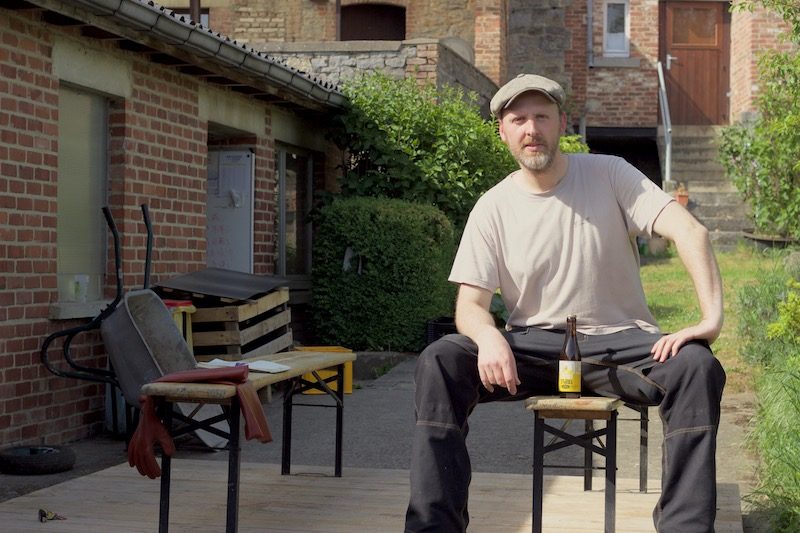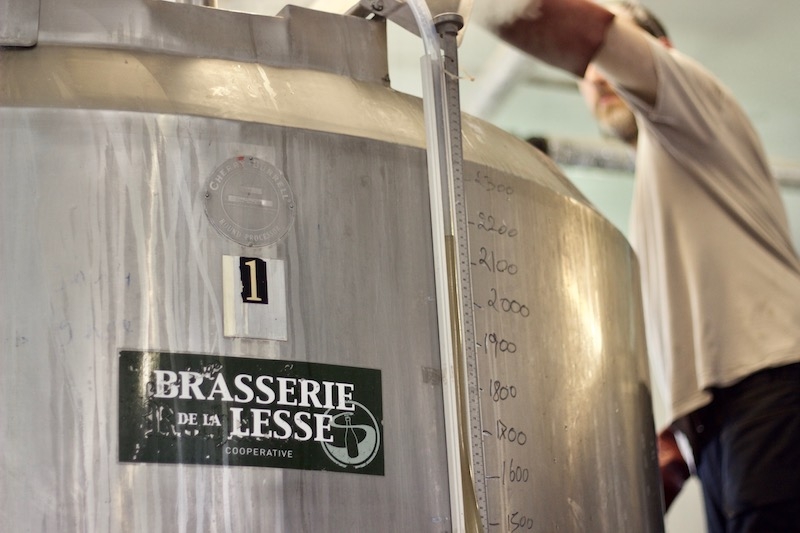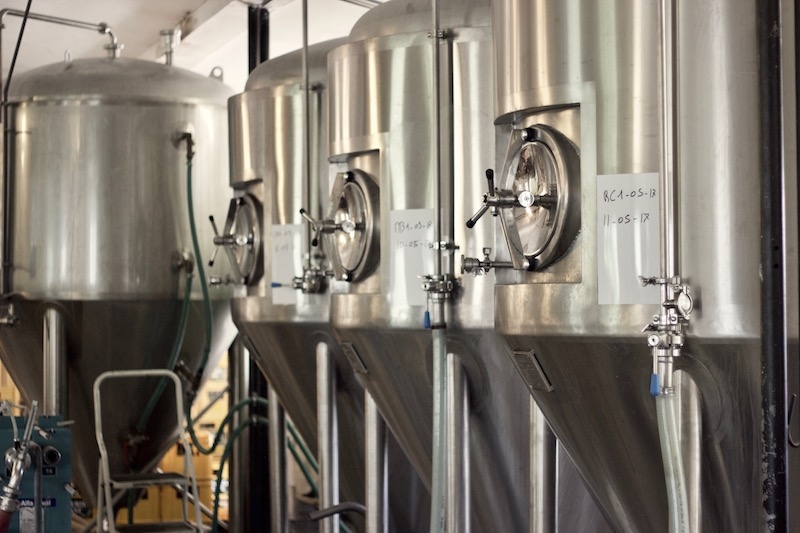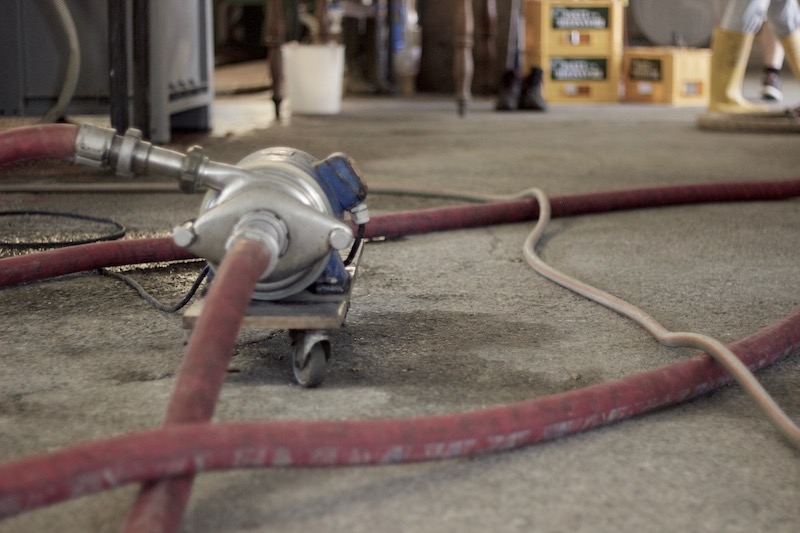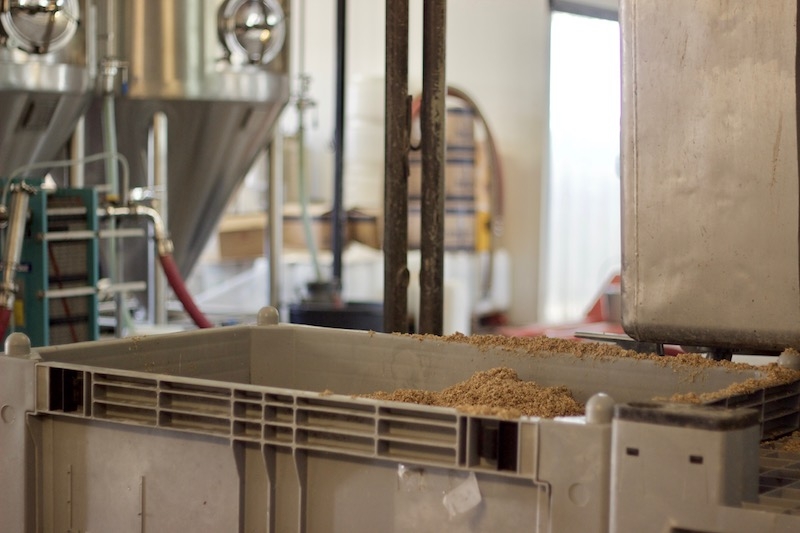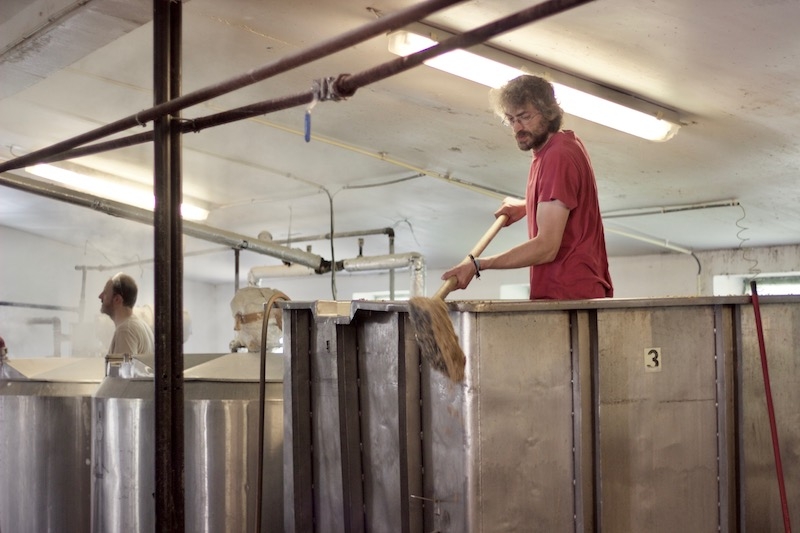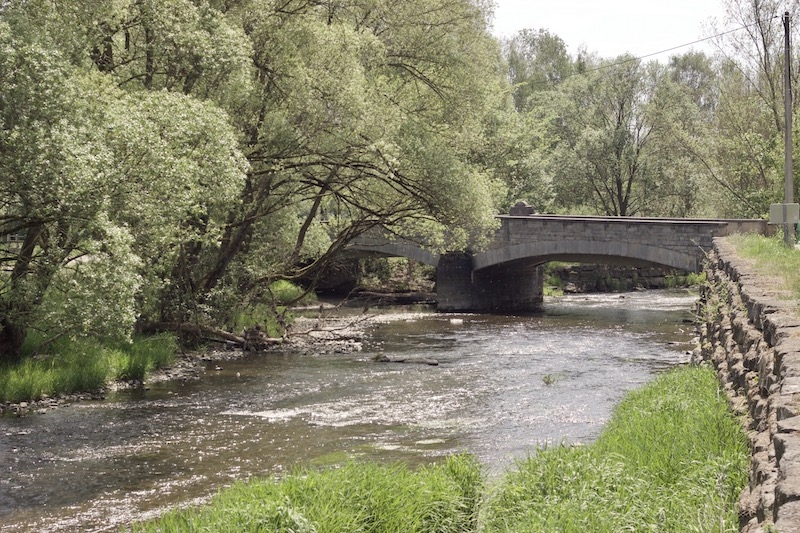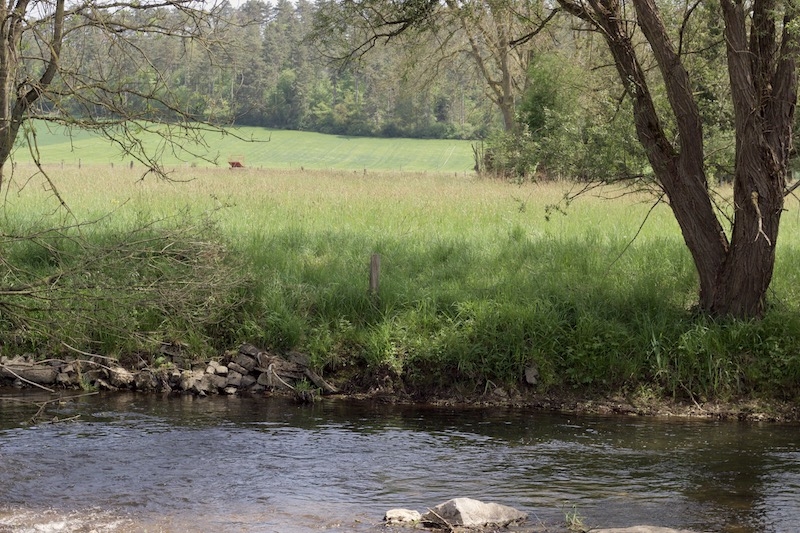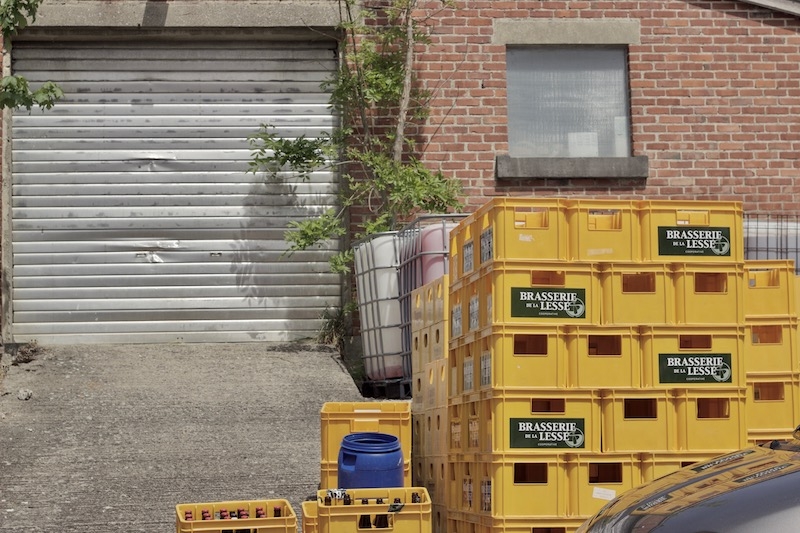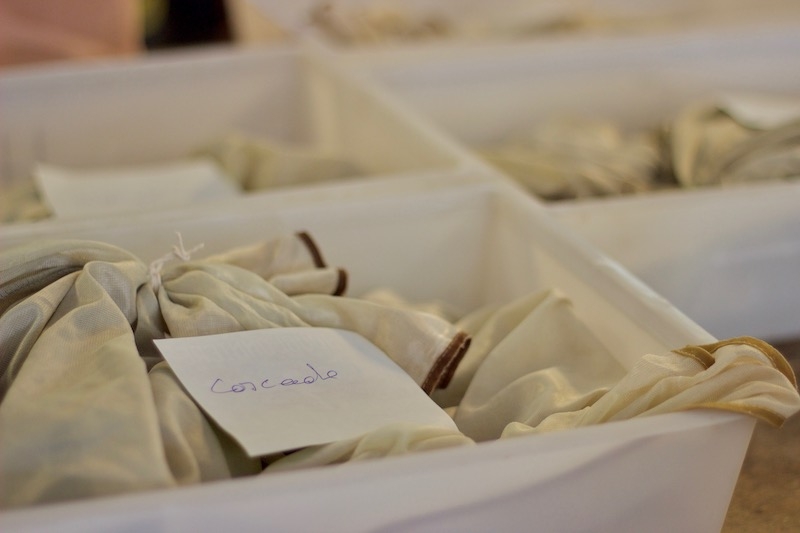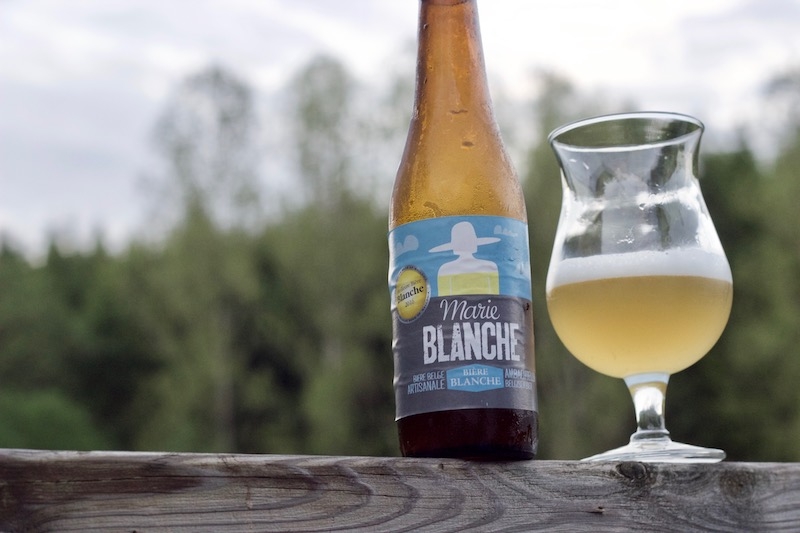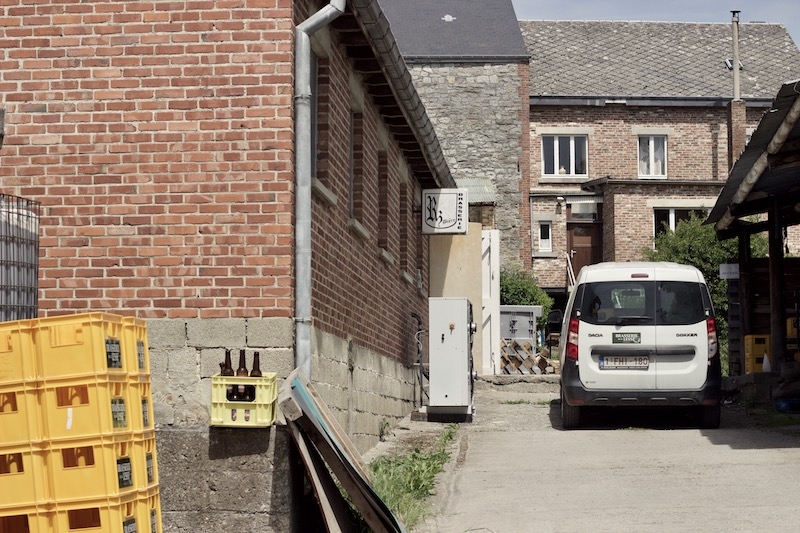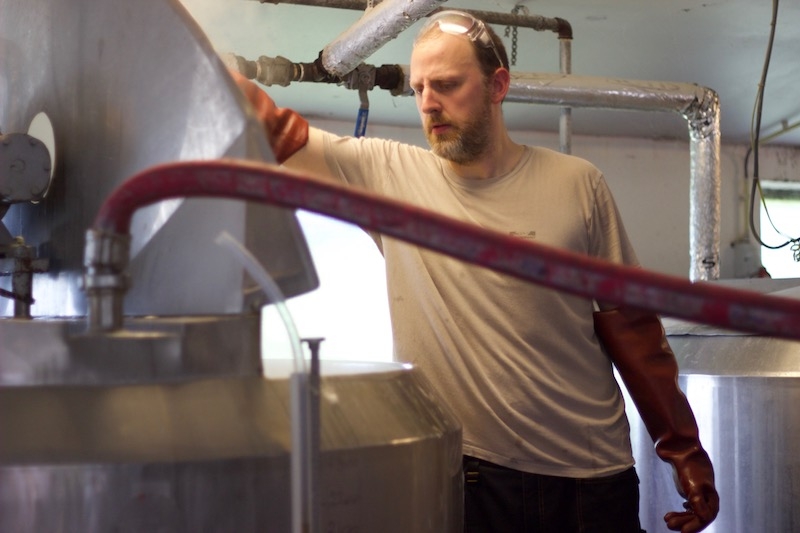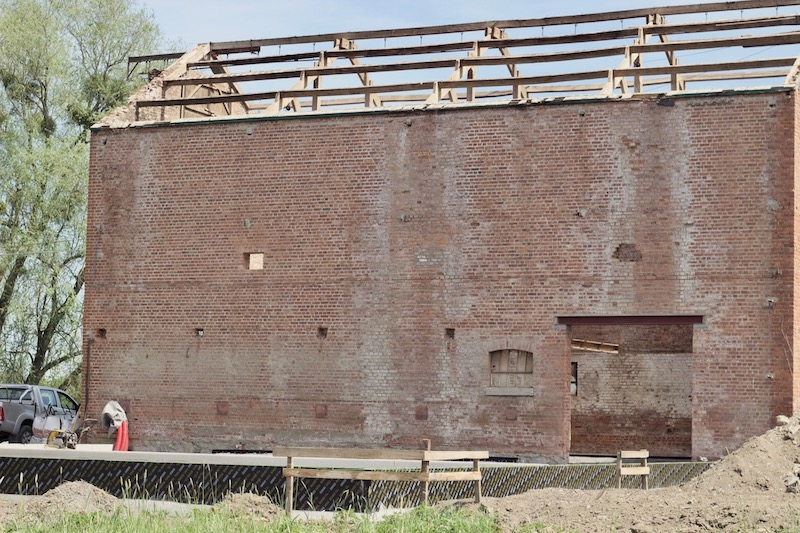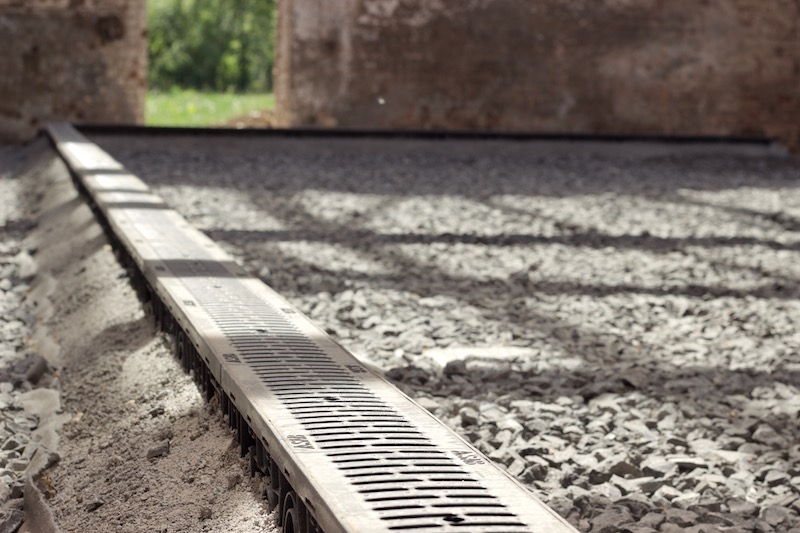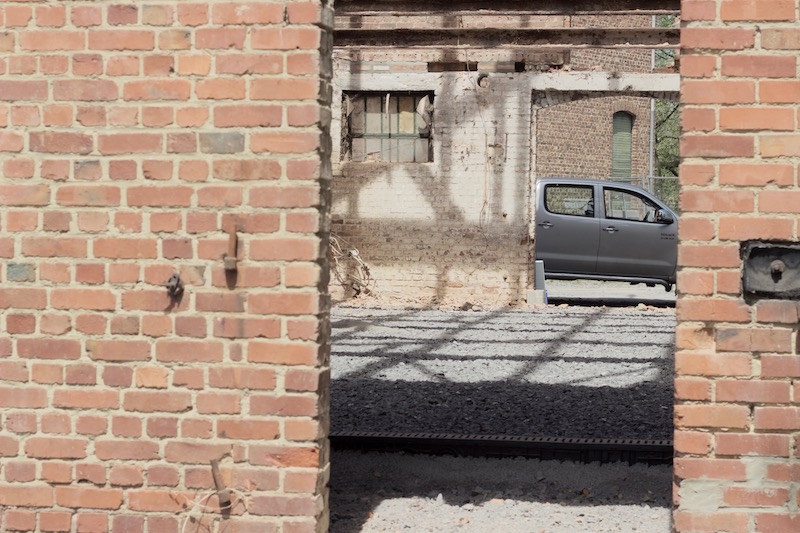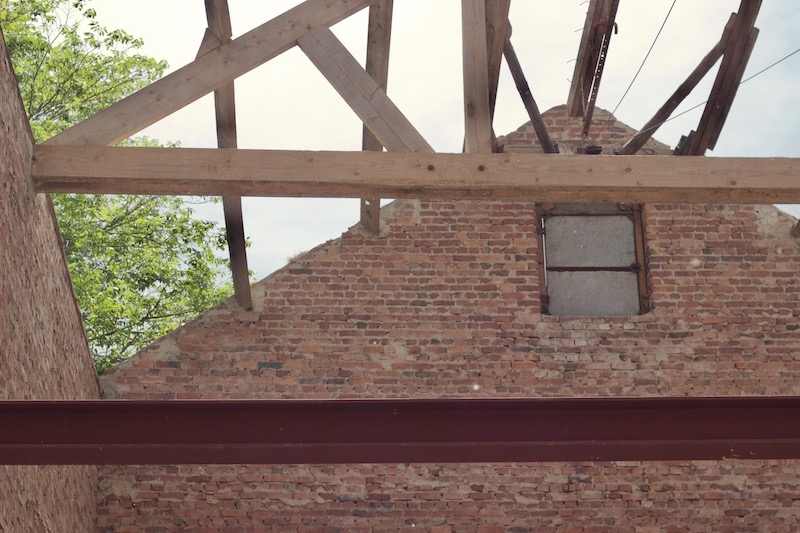In March of this year, Oxfam—an international confederation of 20 NGOs working to end the injustices that cause poverty—began selling a beer box in Belgium.
The glassware in the box, made from recycled glass, was produced by a Bolivian cooperative, one of the 157 fair trade partners with whom the confederation works in over 90 countries across the world.
The bottles in the box—three different beers—were produced in Belgium by a small brewery in the village of Éprave, part of the commune of Rochefort in the province of Namur.
“Our ethics and values are very similar to those of Oxfam,” says Norbert Buysse of Brasserie De La Lesse. “We wanted a way of doing business where everyone has the opportunity to make decisions together.”
BRASSERIE DE LA LESSE
Brasserie De La Lesse is a co-operative brewery. In 2011, 160 people contributed financially to raise capital, those members receiving not only small returns on their investment but a voice in how the brewery is run. They use locally grown barley and organic hops. 50% of their production remains in their local commune of Rochefort and all of their beer stays in Belgium.
The story here is not that the brewery is a cooperative. Crowdfunding and community are commonplace in beer. The story here is that this way of doing business is working for Brasserie De La Lesse. It’s working really well.
They’ve experienced growth every year since they started brewing. In 2012, they produced 480 hectolitres of beer. Their forecast before the end of this year is for production in the region of 1,300 hectolitres. Within the next few months, production will transfer to a newer, bigger facility further down the same road.
COOPERATIVE ALLIANCE
Brasserie De La Lesse was started in 2011 by a group of friends from a beer club called the Confrérie du Busson (the “Brotherhood of the Busson”).
They bought their initial brewing equipment from a small brewery that had shut down called Rézette which brewed a beer in the late 1990s called La Rochefortoise.
The cooperative involved 160 people, each contributing €250 of capital up-front, entitling each member to cheaper prices on crates of the beer and a say in brewery affairs.
“We wanted a business where the profits wouldn’t only go into our own pockets or into some investor’s pockets, but rather would be invested back into the company,” says Buysse. “We want to use the company profits to help people who have social difficulties by offering them jobs or by investing in better equipment in the brewery.”
The philosophy of those at Brasserie De La Lesse stems from disillusionment with the economic situation of rural areas in Belgium. “We wanted an economy that serves the human being and the people so we naturally went to social economy,” continues Buysse. “People often think social economy is about rehabilitation or that it is a state funded economy, but social economy is just about having another goal than just personal wealth.”
Cash taken out of the business is legally limited to a maximum of 6% of invested capital. “Profits have to be invested back within the social goals that the founders of the company choose,” says Buysse. “We can choose any kind of goals. Our goal was to create employment in rural areas, relocating the economy and having a cooperative activity.”
A RIVER RUNS BY IT
The current brewery is cobbled together from old margarine tanks. They brew 20 HL batches, two times a week, fermenting and conditioning in four 20 HL cylindroconical unitanks.
There are four people working in the brewery. Buysse works together with Head of Production Manu Collin and assistants Jean-Hugues Streignard and Jean-Pierre Deloyer. There are six Directors to help steer the commercial side of the business, including Buysse and Deloyer from the brewing team, as well as Christophe Cadiat, Frédéric Camberlin, Vincent Dufey and Denis Lefevre.
The name of the brewery derives from the river which flows through the region, a tributary to the river Meuse. The Lesse is 650 metres west of the brewhouse, firmly tying the location of this brewery to its identity.
The current facility is set at the end of a country lane off a tiny non-descript village road, a small turn-off between cute red and grey bricked Walloon houses draped in climbing ivy. The old farm buildings in which the brewery is housed are ramshackle and basic. The views from the edge of the lane-way showcase tidy field-size gardens and the beginning of dense forests.
The area itself is rural and peaceful with brewing neighbours on all sides, including the Rochefort Trappists, the quality-focused Du Bocq, the like-minded Caracole and the quirky Silenrieux. Further west there’s brewpub Des Fagnes.
Relative newcomers such as Marsinne and Bertinchamps – both housed in renovated farm buildings – round out the brewing activity of the Namur province.
REGIONAL NETWORK
Brasserie De La Lesse have invested all of their marketing efforts into building a regional distribution network. Nothing is distributed in supermarkets. None of their beer is exported outside of Belgium. Even the Oxfam beer boxes stay in Belgium.
“Our beers are sold exclusively at small retailers and in the catering business,” says Manu. “We charge prices allowing traders to realize a margin sufficient to maintain their economic activity. In accordance with its social purpose, the brewery does not export. In all our efforts, we mainly work with local companies and self-employed people. We’re looking for horizontal growth and not vertical growth.”
ORGANIC MOTIVATIONS
Their use of organic ingredients is not about any ability to market their beers with a ‘bio’ label. In fact, they’re eschewing the opportunity to brand them in this way. “We don’t want an organic label because we didn’t want to be stuck in an organic-only network,” says Buysse. “There are still lots of people who don’t like organic-labeled products because they feel they are for rich bohemian people or they think it’s more expensive, even if that is not necessarily true.”
Sourcing organic ingredients is not easy. “It’s difficult because you need excellent raw materials when you brew,” says Manu Collin, a former teacher and now Head of Production at Brasserie De La Lesse. “We want our barley to be pesticide-free. We want to respect the environment. We’re trying to motivate farmers in the region to grow brewing barley. This year we’ll be using 17 tonnes of locally grown barley in our beers.”
The brewery has established a partnership with an organic farmer in Hélecine to grow the amount of local barley required in their grist bills. They’re working with another cooperative in Liège for organic hops. They’re also purchasing organic ingredients from Dingemans maltery in Stabroek and De Plukker organic hop farm in Poperinge.
CLASSIC CORE
The beers from Brasserie De La Lesse are classically Belgian on all fronts: style, process and sense of balance.
La Chinette (6% ABV)—a play on words (the names of local beer lovers is ‘Chinards’)—is in the vicinity of a classic Belgian blond, perhaps a little more dry than other versions of the style and with a softer ester profile (they use an English ale yeast strain rather than a classic Belgian one).
Marie Blanche is a refreshing witbier of 5% ABV and La Cambrée (6.5% ABV) shows off a pleasant caramel malt character without the under-attenuation often hampering the drinkability of Belgian amber ales. The Autumn version—La Cambrée d’Automne (6.5% ABV)—is essentially a wet-hop version brewed once a year with freshly harvested hops.
Their Brown-Ale-stroke-Dubbel, La Rouge Croix (7.5% ABV), is named for a cemetery located just as you leave the village of Éprave. L’hiveresse (8% AVB) is their spiced, specialty malt winter beer.
INDEFATIGABLE SPIRIT
Receiving most attention of late, however, is L’Esprit Triple’s, a beer with a confusing name which is wrapped up in a mirror anagram and references both higher alcohol spirits as well as ‘spirit’ in the attitudinal sense.
It’s a Tripel of 8% ABV and the most hoppy beer in their line-up. It’s about to become their most popular, perhaps a combination of the Belgian public’s seemingly insatiable appetite for this style of beer and the growing experience inside the brewhouse.
“As soon as it was launched our Tripel became the third most popular beer of the six we make,” says Manu. “If orders for the Tripel continue the way they have been going, it will be our most popular and most produced beer within a very short period.”
Noé Leboutte owns a bar (Beer Lovers) and beer distributorship (Bières Spéciales) in Liege. “The new Tripel from Brasserie De La Lesse is a big success in our shops,” he says. “We sell a lot of their beers. They are easily drinkable, they have classic styles and they have good prices. They are a very good brewery in my opinion. It’s a real cooperative in the spirit of the team and how they work.”
RESTRAINT AND TRADITION
Despite the conscious decision to opt for a more traditional Belgian line-up, there is nothing conservative or unskilled about the brewing team at De La Lesse.
The improving quality of their beers and their burgeoning reputation as a brewery must in some part be down to the passion and know-how of Manu, a card-carrying member of the American home-brewers association and a self-proclaimed beer geek.
“At home I also brew lots of other types of beer,” explains Manu. “I have a small wild project. I brew hop-forward American styles. I love brewing imperial stouts. When I arrived here at De La Lesse two years ago I think the beers were a little sweeter. People drink more Orval now. They like bitterness. We’ve made some changes without losing our drinkability, balance and accessibility.”
The labels are cartoon-esque illustrations which appear to be ubiquitous on the bottles of small Walloon breweries and depict the stories behind the names of the De La Lesse beers, sometimes artistically clever, sometimes verging on twee, although a recent branding reboot seems to have tidied things up a bit.
ALONG THE SAME ROAD
Within months, they’ll have moved to their new brewery, a series of old red-brick farm buildings on the other side of Éprave village, further along the Rue du Treux, adjacent to the tiny river, L’homme. It will offer more space, a brand new brewhouse, bespoke loading areas and a separate warm chamber building for refermentation.
The investment in buildings and new equipment is estimated to be in the region of €1,000,000.
In order to meet the costs of this growth, the brewery will receive financial assistance from Belgian credit institutions and other state funding programs, as well as a further €130,000 investment from 200 additional cooperative members.
In addition, the local government are helping to conduct a feasibility study at the new brewery which Brasserie De La Lesse hope will help them reduce energy consumption and develop know-how in maximizing storage.
The project is 75% funded by the Walloon Region and carried out by two engineers from Heneallux.
Reducing energy consumption will allow the brewery owners to stay true to their environmental ambitions.
The capacity for increased production in the new brewery will allow them to deliver even more to their local region.


